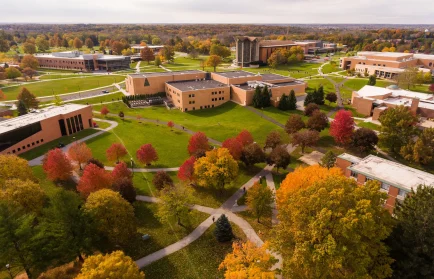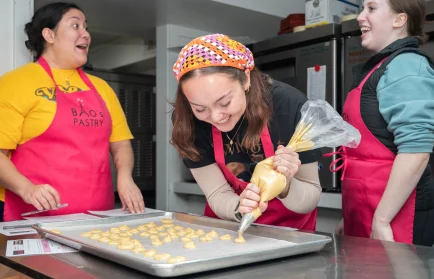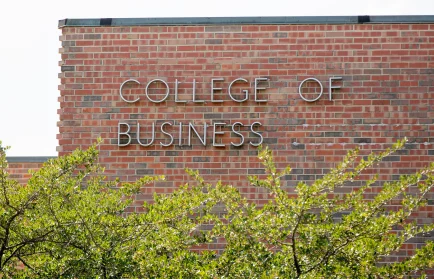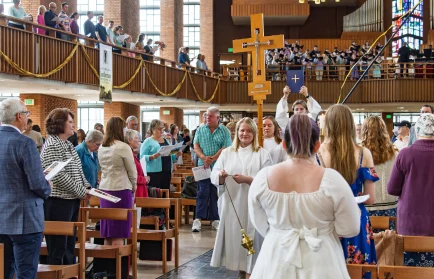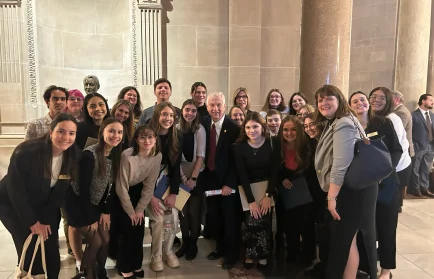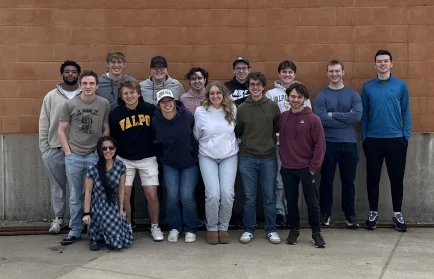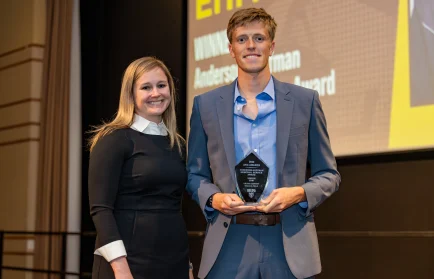In Quest of Beauty
A Virtual Exhibition sponsored by the Valparaiso University Brauer Museum of Art
Preface
The exhibition In Quest of Beauty: The Art and Life of Junius R. Sloan (1827-1900) is the first in a series of exhibitions interpreting the permanent collection of the Brauer Museum of Art at Valparaiso University. It is part of a larger project entitled “Nature and Culture in American Art” which was made possible through a matching grant from the Indiana Humanities Council in cooperation with the National Endowment for the Humanities. Additional support was provided by the Sloan Endowment and Valparaiso University. This series was designed for teachers and students of all ages to use the museum’s collection as a “visual library” to study the humanities through art. Each exhibition in the series was first realized as a pilot online exhibition which was discussed by a focus group of teachers in the humanities.
The Brauer Museum of Art is fortunate to own the “collection of record” of Junius Sloan, which includes over 400 paintings, watercolors, photographs, sketchbooks, letters and other documents pertaining to the artist. While this archival treasure records an artist’s life in the 19th century, it also reveals a unique social history of the period. We are grateful to Percy H. Sloan, the son of the artist, for donating 276 works by Sloan, as well as 107 American paintings and a generous endowment fund “for the establishment, maintenance, and expansion of the collection.” The remaining 124 Sloan paintings and documents were donated by J. Carson Webster and family descendants through the efforts of Richard H. W. Brauer, who has devoted years of research to Junius Sloan. Professor Brauer’s work has been a labor of love and his scholarship has given Sloan a lasting legacy. It is Dick’s passion for Sloan’s work which has made the nineteenth century come alive in the minds and hearts of all of us who have had the distinct privilege of hearing Mr. Brauer speak so lovingly about this “gifted Great Lakes Region farm boy.”
We gratefully acknowledge the loans from the Chicago Historical Society, the Essex Historical Society, Connecticut, and Gridley McKim Smith for the current exhibition. We are indebted to Ellen Brauer, John Feaster, Esther Sparks Sprague, and Ross Carmichael (VU 1999) for their editorial assistance. We especially want to thank John Paul Avila (Class of 2000) for the exceptional design of the brochure and our website. We want to acknowledge Gretchen Demuth (Class of 2000) and Kirsten Renahan of our Museum Education Committee for their unique contributions to the teacher packet. Every member of the Brauer Museum staff has contributed to the success of the exhibition. Particular mention must be made of the work of Juliet Istrabadi for her coordination and editing of the online project; Rebecca Simons for her work on the time line and coordination of events and publications; Christina Grevera for coordinating the loans and works of art, and Liz Wuerffel (Class of 2000) for her assistance. We also thank Wendy Barker (Class of 2000), Carl Galow, and Gerald Knarr for the installation of the exhibition.
We hope that visitors will come away with a richer under-standing of the range of artistry of Junius R. Sloan, as well as an appreciation of the way in which his life intersected with the social history of nineteenth-century America.
Rita E. McCarthy
Project Organizer
Former Director/Chief Curator, Brauer Museum of Art
Early Life
Growing Up As An Artist
Junius was a farm boy who loved to draw and to study the beauty of nature. In his childhood and youth there was little if any formal art schooling available, let alone works of art for him to see and study. Instead he was compelled to learn by doing. When he reached his majority, he traveled as an itinerant portraitist and looked for artist mentors.
“I must say it requires a great deal of philosophy for me to leave the easel for days to hoe corn, grub stumps, and the like. And yet it does not seem as tho’ I had spent the day unprofitably, or in vain if I have taken heed to fill the thousand spare moments in looking at nature–the book from which I study is spread out before me in all places, and is always open.” – Junius to Robert from West Springfield farm, June 9, 1851
On March 8, 1848, Junius wrote: “Spencer, on Friday the 10th I shall be a man, i.e. I shall be 21. God grant that I may so conduct myself that my friends need never blush to acknowledge me as such.” Junius wrote from Ashtabula at the home of Mr. and Mrs. Strong whose portraits and those of two children he was painting. The portraits took two weeks to complete and earned him $20.
Junius, a novice itinerant portraitist now in his majority, left home for almost two years, “hunting heads” to paint. Junius called it “my first rambling for any considerable distance from the paternal roof.” In his Autobiographical Fragments Junius tells of his encounters and travels by foot, stage, steamboat and canal boat until, near Middlebury Vermont, he saw the mountains for the first time. “As we drew near the mountains, the clouds lifted as a curtain and a broad panoramic view of these wondrous creations [was] revealed to me… Fatigue, and hunger and cold and wet were measurably forgotten…”
Junius’ trip east as an itinerant portraitist had been a financial struggle. Now in his mid-twenties, Junius searched for ways to improve. As a self-trained artist, learning by doing was still central. In the summer Junius made the West Springfield farm his home base. There he painted and drew, as well as helped in the fields and in a household that included six younger siblings.
For Junius, nature remained his principal teacher and inspiration, an idea that was reinforced by reading the works of Ralph Waldo Emerson:
“Do you recollect that Emerson says, the difference between landscape and landscape is small, but there is a difference in the beholders. The stars at night stoop down over the brownest, homiliest community with all the spiritual magnificence which they shed as on the Campagna or on the …deserts of Egypt. A thousand things are beautiful, and I pause to look at them with delight, which formerly were passed with indifference.”
– Junius to Robert, West Springfield Farm, June 9, 1851
Though inspired by nature and led by self-direction and practice, Junius also needed, in his novice years especially, wise encouragement and as Junius wrote: “somewone who had traveled the road before me …to caution from error, and guide by hints in the right path.”
The creative, charismatic penman Platt R. Spencer (1800-1864) and his son Robert (Junius’ classmate at the Kingsville Academy) and daughter Sara (later Junius’ wife) who lived nearby, loved the beauties of nature. They befriended Junius and gave him their lifelong support.
Robert Duncanson (1821-72) lived in the city of Cincinnati, then known as the “Athens of the West” for its art patronage and artists. Junius became friends with Duncanson, a leading midwest literary landscape painter who was a free black. Duncanson was then enthusiastically planning a monumental five by seven foot landscape, The Garden of Eden, based on John Milton’s book Paradise Lost.
However, it was not Duncanson but rather Erie, Pennsylvania’s resident portraitist Moses Billings (1809-1884) that modeled for Junius the crisp, well-crafted style of portraiture that Junius would adopt. The characteristic Billings style can be seen in the 1851 portrait, presumably of Junius.
Landscapist
Life As A Landscapist
For nineteenth century Americans, a vast, unspoiled continent, both spectacular and commonplace, was being revealed as the American homeland. Until the Civil War at least, most American landscape painters celebrated this homeland vision as a symbol of America and of God’s goodness. Junius Sloan was one of those artists; he came late and stayed long at this task. For him, painting the beauty of Divine order in untouched and pastoral landscapes had long been akin to an act of worship. Junius painted ‘beauty for the joy of it.
“The rising sun is heralded by colors most gorgeous and pleasing. The watching and expectant clouds, which are about his coming path say with tones of every hue to one another, “He comes,” and they shout down to us in orange and crimson “He comes.” – Things that Cost us Nothing, Junius R. Sloan, Winter of 1859, Sloan Archives, Brauer Museum of Art
Encouraged by his three years in Chicago as a novice landscapist, Sloan, in June 1867, sought professional excellence, not by a grand tour of Europe or an exploration of the far west, but by a five-year pilgrimage of self-education at classic landscape scenes in the Hudson River Valley, including the Catskill Mountains, Lake George, and Vermont. By late August, settled on the Dietrich farm near Palenville, Junius began pencil and oil field sketches of Lake George and of views centered on the Catskill Mountain House resort hotel, views celebrated by painters Thomas Cole and Jasper Cropsey, and by writers James Fenimore Cooper and William Cullen Bryant. In 1868, R.E. Moore, Junius’ Chicago dealer, sold an exhibition-sized composition, View of Lake George, to Lake George native and prominent Chicago business leader C.R. Larabee for $300, and Ticonderoga to George M. Pullman, thirty-six, founder in 1867 of the Pullman Palalce Car Company, for $200.
“The Catskills, a by-passed bastion of wild beauty close by the most civilized centers of the eastern coast [had become] a…leading motif of the American romantic movement.” -Roland Van Zandt, The Catskill Mountain House, Rutgers University Press, 1966
When Junius and his family returned to Chicago in 1873, the country was in an economic panic. Junius’ income from the sale of paintings was not enough, so Sara started teaching penmanship. Nonetheless, Junius was gaining respect in the art community. In 1876 he became an Academician (a professional member) of the Chicago Academy of Design, the forerunner of the Art Institute of Chicago.
Junius would usually take summer and fall sketching trips, to, for instance, the Milwaukee shoreline, to paint directly in the presence of nature. Later, in his studio he would develop these sketches and also would construct compositions from imagination and from previous works, as with On the Winooski River, Vt. and Grey Day in the Catskills . In this way, in the sixties and seventies, Junius provided modest-sized oil portraits of localities and idealized pastoral scenes.
Portraitist
Life As A Portraitist
After taking two years off to help his father establish a farm on the Illinois prairie, Junius became resident portraitist in the Bureau County seat, Princeton, Illinois. By 1856 Junius’ portrait production had arrived at the level of finish and workmanship modeled for him by Moses Billings. His drawing was accurate. Head forms were well-defined, with shading and coloring used to create convincing three-dimensional mass. He could offer good commercial portraits, and he got customers.
“I have just opened here, and the prospects seem tolerably favorable in as much as there is wealth, taste, and a lack of pictures.” – Junius to R.R. Spencer from Princeton, May 18, 1856
Portrait painting had been very popular in the early 19th-century, but by the mid-1800Õs, photographs were starting to take precedence and the demand for painted portraits began to diminish. This meant that portrait painters such as Junius Sloan has to find new subject matter. In Sloan’s case, he took up landscape painting, but continued with portraits on the side.
As a portraitist, Junius was able to use photography to his advantage. In some cases (such as the case of Emma Spencer, his sister-in-law who died at the age of 10) he took an existing black-and-white photograph and drew lines on it as a guide. He then paint a more detailed portrait in color. Junius did several posthumous portraits, possibly because the subject’s loved ones did not have a formal portrait made before their death. These could serve the purpose of humanizing the memory of a loved one. Although photography took over the role of portrait painting, it could also serve as a tool to help painters.
In the portrait of his wife Sara, shown here, he actually painted over a photographic salted-paper print. Junius probably colored the portrait photograph of Sara to show potential customers what he could do. He charged five to ten dollars for these 9 x 7 inch oil-colored portrait photographs. By comparison he got $25 for a 30 x 25 inch oil portrait on canvas.
In his sketchbook of 1855-56, Junius not only drew detailed face studies in preparation for painted portraits, but also informal sketches of family members as seen in casual moments of their daily lives: father Seymour catching flies and brother Henry reading. To some extent these sketches are also likenesses, but likenesses in action. Junius’ purpose, apparently, was to improve his general drawing skills and to explore new expression. No known paintings are based on these genre drawings.
After his 1858 visit to New York City where he met Jerome Thompson, the popular painter of landscapes with genre figures, Junius produced more genre drawings. His production culminated in ninety-four exceptional figure studies in pen, pencil and brush in a small sketchbook dated ca. 1860-81 (Sketchbook 3).
Perhaps the finest genre drawings in this sketchbook are those of Junius’ five-year-old sister-in-law, Emma Spencer, and that of the seated, bearded man reading a newspaper, probably Junius’ twenty-five year old brother-in-law, Platt R. Spencer, Jr. Very likely Junius drew these in the spring or summer of 1861 when he and Sara helped Platt and Persis, now in very poor health, move from Oberlin back to their homestead in Geneva, Ohio.
In November and December 1860 and January 1861, Junius and Sara stayed with the family of her cousin Caleb Spencer in the town of Catskill on the Hudson River twelve miles from Palenville. While he was there, Junius seems to have painted two imaginary genre scenes. These studio compositions of children in the landscape seem based on his direct observation of figures and foliage. Though uncharacteristically colorful, both have the high degree of finish found in Junius’ commercial style of portraiture.
Creating scenes based on conventionally popular themes apparently did not continue to interest Junius because there is no record that he painted more like this. Instead, the few other genre paintings he produced in his lifetime seem painted out of personal experience.
In 1866 Junius spent the summer and fall painting at his parent’s farm home near Kewanee, Illinois. This would be their last summer at the farm before retiring to town in 1867. Junius’ two surviving prairie genre paintings, The Knitting Lesson and Cool Morning on the Prairie are two of his most noteworthy. The Knitting Lesson was probably based on precise preliminary pencil drawing and Junius’ commercial portraiture finish. Cool Morning on the Prairie, on the other hand, seems based on his new, broadly painted sketches.
The few later genre paintings seem also to be painted for personal expression rather than for commercial sale.
Later Life and Obituary
In the summer of 1815 my Uncle Samuel Rice who married my mother’s sister,and Reuben Luce, a cousin of my father’, became much interested in the finedescriptions given of the beauty of the country in northern Ohio, then known as ‘New Connecticut.’ They visited Ohio that summer, located a couple of farms, and in the spring of 1816 moved their families and effects out there. My brothers Artemas and Calvin gathered up a scanty wardrobe, put them into packs made of linen cloth made by mother, with axe with handles sticking from the packs and started with them for their western home. They accompanied the teams most of the distance, however they carried their own packs. At Chataqui Lake, Jamestown, my brothers stopped for a month or two and worked, then went on to Ohio. In the fall of 1816 my father made a trip to Ohio in a one horse wagon – was gone about six weeks.
While there he selected his piece of land and the winter and spring following was made busy with preparations forgoing to what was then the far West.
I can remember very distinctly about the last scene about our old home was an auction or as it was called then, a venue, in which our household effects were sold, and how sad my mother’s face was as piece after piece were knocked down under the hammer, relics of early life, associated with marriage and the rearing of nine children. The day was over, the scene closed, our remining articles consisting of beds, bedding, loom and quill wheel and some other weaving appendages were packed in our covered wagon, the farewells were said, tears fell, our driver Anson mounted the wagon and drove away Westward, and the Curtain [sic] dropped and shut most of us out forever from our happy Childhood [sic] home. New scenes now opened to us — the novelty of travelling, new scenes every day, and to the youngest of us who soon forgot the sad scenes of parting with our dear old home and friends forever, it was pleasant and exciting. About two days journey from our old home my father had a sister living, where we stopped a day or two and then proceeded onward to Saratoga or as it was then called Sandy Hill where I had another Aunt, my father’s sister, where we rested for some days. The springs had then begun to attract a little attention, the little dwarf pines that grew there were cleared away in patches, and a few unpretentious houses and shops erected and the springs were fenced around, platforms laid about them, and facilities for dipping up water. In a circumference of half a mile there were probably one hundred and fifty inhabitants. Such was Saratoga in 1817. Our journey from thence was of much interest to a child like me; we were ferried over streams too deep to ford in old rickety scows but not knowing much I had no fears. (One circumstance however I shall always remember; that was the first Indian I ever saw.) Among our neighbors in Massachusetts were a number of old men who were pioneers there and had served in the Old French and Indian Wars while we were yet Colonies [sic] to Great Britain. They generally conversed more or less of their privations during those wards, and tell of the numerous atrocities committed by Indians and recount the horrible barbarities committed by them. These things made deep impressions upon my mind and my nightmares were always Indians attacking & torturing me, from which I would wake calling upon my father for help.
Like all boys I was lazy and perhaps more so than some, (at least, they used to tell me so) and I lagged far behind the wagon. We were up in Oneida County in New York where there was a large Colony [sic] or Settlement [sic] of Oneida Indians. They were perfectly civilized and dressed in civilized fashion. I was far behind the wagon, when I met two Indians. Though I never saw one before I knew them at a glance. My laziness forsook me instantly, and there was good time made until I came up with the wagon. From that day my lagging ceased.) We halted a day or two at Buffalo to rest and recruit our jaded horses preparatory to encountering through passage which was then termed the Cattaranger’s Swamp extending from Buffalo to Silver Creek. Buffalo was then a scattering village with few houses, it having been burned three years before by the British. My father, mother and myself went down to the creek (there was no harbor there then nor for years afterward) and went on board a little schooner of about twenty tons, owned in Conneaut or what was Salem, and sailed by Capt. Ward. It was proposed, as my mother’s health was at that time very poor that she go up the Lake by water, but for some reason she did not go, but we relieved our team somewhat by shipping a heavy box on the schooner. We were four weary days making the distance of twenty eight miles from Buffalo to Silver Creek, keeping many times one on each side of the wagon to keep it from turning over. From Silver Creek the roads along those lake ridges were very passable, and had you stood in the then wilderness where you are now measuring tape in a fine brick store; in the after part of the day of July 3rd, 1817 you would have seen a jaded and tired span of horses hauling a covered wagon [sic] westward accompanied by a sunburned, dusty, travel-stained lot of boys and girls, a pale, tired woman sitting in the wagon [sic] with a little boy about two years old, her youngest, while a dark complexioned black-haired man slightly tinged with grey (my father) energetically superintended all. That was our family and your ancestors. Somewhere west of Elk Creek and between that and Springfield, we spent the last night out, of that long and wearisome journey. The next day, the fourth, we met Artemas and Calvin about a mile west of Kingsville and we were housed with my Uncle Rice who married my mother’s sister. We were in New Connecticut our future home.
The Curtain rises again and new scenes open before us. We must have home and shelter. The strokes of the axe echoed in the forest, trees are felled and cut into suitable lengths, — they are hauled to a small opening, the willing in habitants around help &they are piled into walls for a house, the fro [wedge] rives the large oak blocks into staves or shakes used for shingles, they are held in position by laying poles upon them. Straight grained soft wood are rived into punchions for floor, a hole through the roof serves at first as a chimney, and in ten days from our arrival we are home in our rude cabin. Such was pioneer life in Ohio. Our first days and weeks there were days and weeks of privation, the wheat was not harvested, flour was scarce, for there were few mills, much of the grain was carried bed down to a mill on Elk Creek down in the valley. Meat was scarce, cattle and hogs had not then been raised in any quantity. Before fall however we had a cow which pastured in a lot a mile and a half from us, where we went night and morning to milk. Our house was chinked and mudded up, a stick chimney built, an out-door oven built, a log barn built and a little room to set up the loom. That winter Artemas taught school, at Monroe, about four miles from us. I attended going through the woods. About mid winter I went one morning and found the school house, books and slates a heap of smoldering ruins and was glad. My brother Gamaliel next younger than Artemas was not satisfied with Ohio. He left an attraction in Massachusetts. He was so discontented that after staying there about four weeks my father gave him one of the horses, a saddle and bridle, money to bear his expenses back, and to most of us he bid a last farewell. Only a few of us have ever seen him since. He died a few years since. (Mrs. Geo. Stock well of Ashtabula, whose husband was killed in the great railroad disaster, was his daughter.) Anson did not take to or like farming at all, very soon went to Ashtabula to work at Blacksmithing with John Burrill. Calvin, Horace and myself staid [sic]at home. The forests fell beneath the blows of our axes. I was reared with an axe in my hand, three farms were cleared. We had plenty to eat and our mother cooked it with exquisite skill to suit our every taste. Artemas very soon married Maria Webster and went and lived at the old Webster homested on a small portion of which he now lives. In the meantime Calvin had married, and Horace becoming of age he left Ohio and went to the State of New York with a man by the name of Munger who at that time lived in Ohio and moved back to New York. He built the first frame house in the center of the town, standing on the corner where the post office now stands. Drusilla had married and my sister Anna, Myself and Emory were all that remained at home. Emory was then quite young, and much hard work devolved upon me. In some of the busiest portions of the year my father hired some help, once a man for the season, but I worked very hard, too hard for one growing as rapidly as I did then, and at nineteen I broke down entirely. (The following summer, not being able to work I taught school in Kingsville center for one dollar per week and boarded around among the parents of scholars….)
Death of Seymour Sloan
[Obituary from a Redlands, California newspaper, Dec. 11, 1891]
Last evening (Thursday) Mr. Seymour Sloan died after a brief illness. He was born July 25, 1800, in New York state and emigrated to Ashtabula County, Ohio, in early manhood, settling in Kingsville, where he married Miss Drusilla Luce, whom he has survived over twenty years. In 1852 he once more changed his place of abode, settling with his whole family in what is now Kewanee, Ill., where he remained until December 1887, when, with his two daughters, Mrs. Jas. B. Morse and Miss Mary Sloan, Mr. Morse and Mr. and Mrs. Horace L. Sloan (the former his eldest son), he came to Redlands, a move which has always given him great pleasure and better health. Mr. Sloan was a man of strong principles, and had little patience with the modern winking at such principles. He was a man of unusual business ability, and almost to the end of his life managed his own affairs. From a very early age Mr. Sloan has been an ardent Methodist and a liberal supporter of that church. He has lived a long and useful life, and from his own testimony is glad to be at rest. Mr. Sloan will be taken to Kewanee to rest beside his wife and eldest daughter, Mrs. N. H. Pratt. Besides the above named daughters he has two sons residing in Chicago, Junius R. Sloan, an artist well and favorably known throughout the East, & Dr. Henry H. Sloan, a successful physician & proprietor of Sloan House, Redlands.
Get In Touch.
The Brauer Museum is closed for the summer. We look forward to seeing you when we re-open for the fall semester!
Brauer Museum of Art
Valparaiso University
Center for the Arts
1709 Chapel Drive
Valparaiso, IN 46383-6493
